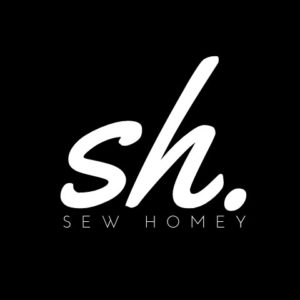To crochet all you need is a hook and some yarn. But if you were to walk into a craft store and look at the crochet supplies, you may become overwhelmed at what you see.
There are hooks, but what size do you get? Do I need stitch markers? What yarn will be best? The list of questions could go on and on. Struggle no more. This comprehensive guide will go over the 8 crochet supplies that you need as a beginner to start your crochet journey. Follow along with me!
1. Crochet Hooks
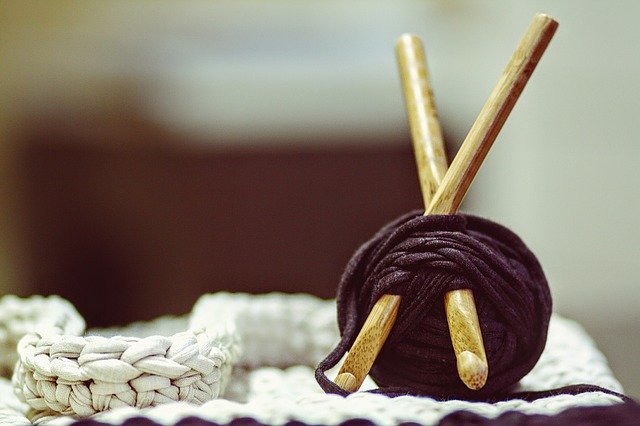
This is the most important tool to begin a crochet project. I mean, it wouldn’t be crochet without the tool. There are several things to consider when choosing your crochet hook.
- The type of material.
- The size of the hook.
- The quantity of hooks to purchase.
The type of material you choose for your hook is important. Depending on the material, the yarn can slip and slide off smoothly or stay snug and tight on the hook. Popular materials include aluminum, bamboo and plastic.
I recommend you get aluminum hooks for your first time crocheting. Yarn will slide right over your metal hook, which makes creating stitches easier. And aluminum hooks are super affordable.
I started out with aluminum hooks and those are the ones I currently use today. And the only reason I don’t suggest bamboo or plastic is because the yarn can be harder to slide off the hook when making stitches. When you are a beginner, you tend to make super tight stitches and combining that with a material that catches, you might struggle getting the loop off. This will go away with practice, but until you can figure out a good gauge, I suggest aluminum hooks.
There are also many customized and cute crochet hooks out there. Browse through Etsy and you can find some very unique ones. However, I would suggest you hold off until you have had more practice. Get to know what kind of hook you like before you invest in a prettier set of hooks.
Next you should consider what size of crochet hook you need or if you need several sizes. You don’t need a full set of crochet hooks to get started, however it can take the guesswork out by purchasing a full set. There is a set of 24 hooks, all different sizes, for less than $20 USD on Amazon. Plus it comes with a case! This is the same set my grandma bought me when I was beginning and I still use it to this day.
If you want to purchase a smaller set that will work for many projects, I recommend the set of three crochet hooks by Boye in the sizes US G/6 (4.25 mm), US H/8 (5.00 mm), and US I/9 (5.50 mm). You get three hooks for less than $5 that all work well with worsted or DK weight yarns (sizes 3 and 4 on the yarn label). I purchased this set for my very first crochet hooks and it worked for all of my projects in the beginning.
If you only want one crochet hook, I suggest to get US size H/8 (5.00 mm). As a beginner, most of your projects will be hats, scarves, pot holders, blankets, etc. All of these things will be able to be completed with a US size H/8 hook. This crochet hook got the most use from me in the beginning. And it worked well because the hook made a nice size stitch that wasn’t too big, but still worked up fast.
2. Yarn
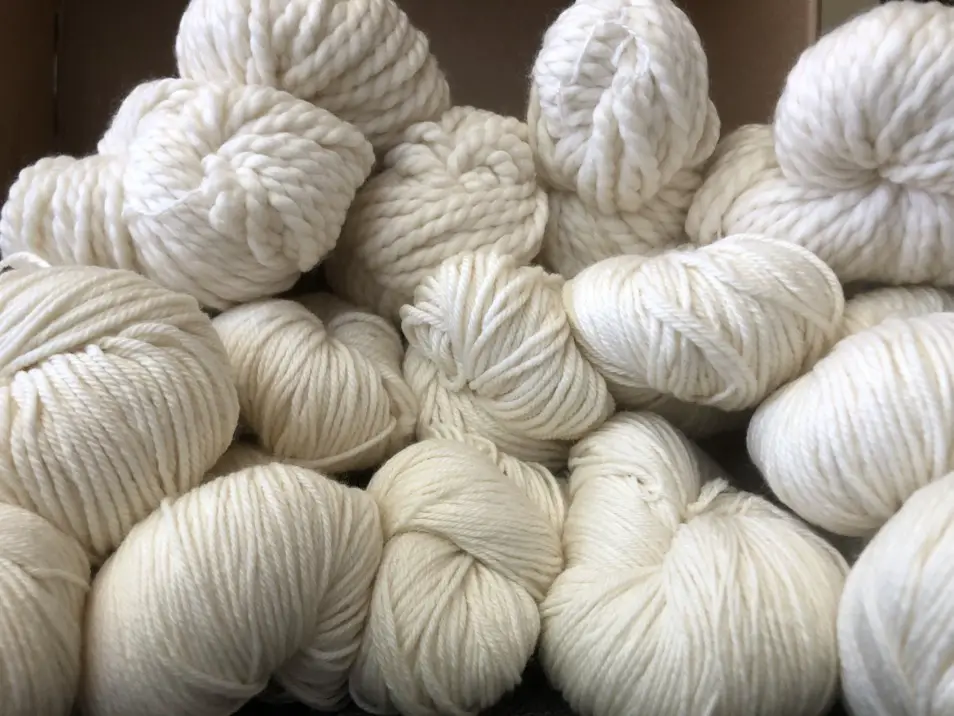
The second material that is just as important as the crochet hooks is yarn. But before you run wild in the craft store, I have a few tips on how to choose a good yarn for your first projects.
- Resist the urge to get the fancy, glittery, or fuzzy yarns. These types of yarns will be difficult to see the stitches. It is easier to learn when you see the stitches and know where to insert the hook to make a stitch. They are nice and soft and beautiful, but keep these for projects after you get more experience.
- Get a DK or Worsted weight yarn. DK will have a number 3 on the label and is slightly thinner than the number 4, or worsted weight. These sizes of yarn are great for beginners because they make stitches big enough that you can see them. And they work up easily so you won’t be working on a project for ages.
- Choose an acrylic yarn. Acrylic is a man-made fiber that is made of polymers. The fibers are tightly spun together and hold its shape well. Acrylic yarn is also very forgiving. You will be ripping stitches out and starting again until you get the hang of it. Acrylic won’t felt and is not prone to make knots when you need to start over. And if you don’t know if you are allergic to natural fibers, this is a good one to start with. Acrylic yarn comes in many colors, so I have no doubt you will find one that interests you.
- Choose any solid color other than black. Black will make it hard for you to see the stitches. Any lighter color will be easier to see. So choose one that you don’t mind staring at for a long time!
I recommend Lion Brand or Red Heart for starting out. These are affordable brands, they have a variety of acrylic yarns, they have a great color selection, and they don’t have too much texture. Some of my favorites include Lion Brand Vanna’s Choice, Lion Brand Heartland and Red Heart Super Saver.
3. Scissors
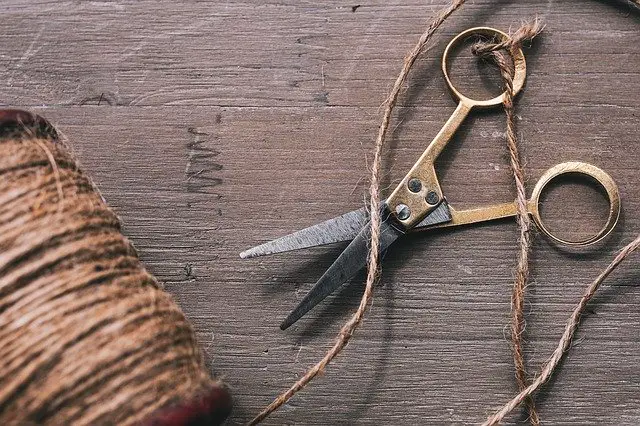
Keep a pair of scissors with your crochet supplies. They will come in handy when you finish a project or if your yarn has a flaw in it. Really any scissors you have on hand will work.
If you want to have a separate pair for your crochet projects, which I suggest, you want a small pair that have a sharp point. Small scissors are more transportable. And sharp scissors will snip the ends of your yarn much smoother.
4. Tapestry Needle
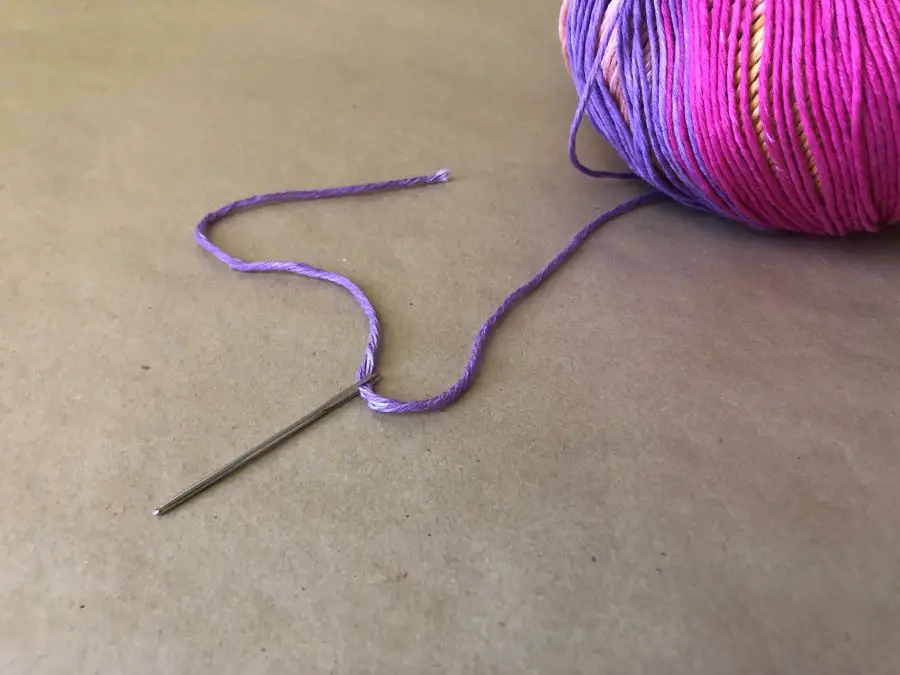
A tapestry needle is an essential tool for crochet because this is how you can hide the ends of your projects. There are plastic or metal variations.
Choose a tapestry or darning needle that has a large eye and blunt end. You will be able to fit many different yarn sizes through the eye if it is large enough. And the blunt end will not poke you and hurt you when using it. I also suggest you get a metal needle because it glides through the yarn very smoothly.
A wool needle is a specific type of needle used for yarn. It looks different than a regular darning needle. It is made of aluminum and has a point, but it’s not sharp, and has a plastic loop at the top for threading yarn. This tool will also weave in the ends.
A bent tip tapestry needle is also handy because it makes it easier to see the stitches you are picking and sewing together. It looks the same as a tapestry needle, except the very point of it is slightly bent. This is easiest to use when sewing amigurumi pieces together.
*Insider tip: whatever kind of needle you choose, be sure to pick a pack with more than one. They are small and very easy to lose. Save yourself the headache and buy a spare!
5. Stitch Markers

Stitch markers are tiny pieces of plastic that hook onto your stitches to mark your place on the work. Many come in packs of 50 to 100 with a variety of fun colors. It may seem like a lot, but they are so tiny and easy to lose. It’s nice to have some to spare. And their function goes beyond just marking your place.
Trust me, they are worth adding to your supply list for crochet. I recommend getting the markers that are shaped like safety pins since they lock. You won’t have to worry about them falling off your project and losing your place.
Stitch markers are especially important for working stitches in the round. Many hat patterns are crocheted in the round, which means they start as a small circle and grow bigger to form a piece of fabric that fits over the head. The marker will indicate the space where the next increase (or decrease) is for the round. It is much more difficult to see where to increase next without a stitch marker.
Stitch markers can also keep your unfinished project from unraveling. If you use a locking stitch marker and secure it in the live loop, the yarn can’t pull out stitches since there is something blocking its way. A stitch marker can double as a time saver.
There are also a couple alternative options to use that are probably already in your house. You can use a safety pin or a paper clip. The only downside to a safety pin is that it is not as noticeable as a colorful stitch marker. And the downside of a paper clip is the risk of it falling off. However, either will do, especially in a pinch. I used paper clips for years.
6. Tape Measure
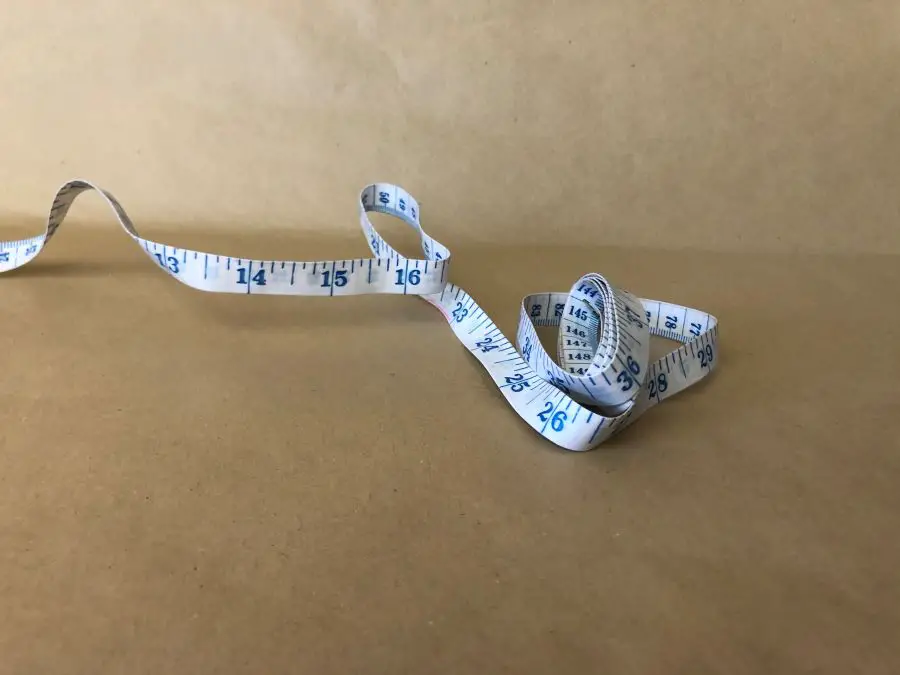
A tape measure is a good tool to keep with your supplies. If you plan to make garments or hats for yourself, you will need to get your body measurements. The best way to do this is with a tape measure. Get one with the imperial and metric systems, which I think most do, because patterns do not always have the conversions for each system.
A tape measure is also necessary for crocheting a gauge swatch. The number of rows and stitches per inch or centimeter will need to be gathered.
A tape measure is also nifty for ensuring your project will have the right fit as you go. Now, this will depend on the type of project you are working on. But in general, you will want to measure as you go to make sure that the finished measurements will be correct.
7. Notebook and Pen/Pencil
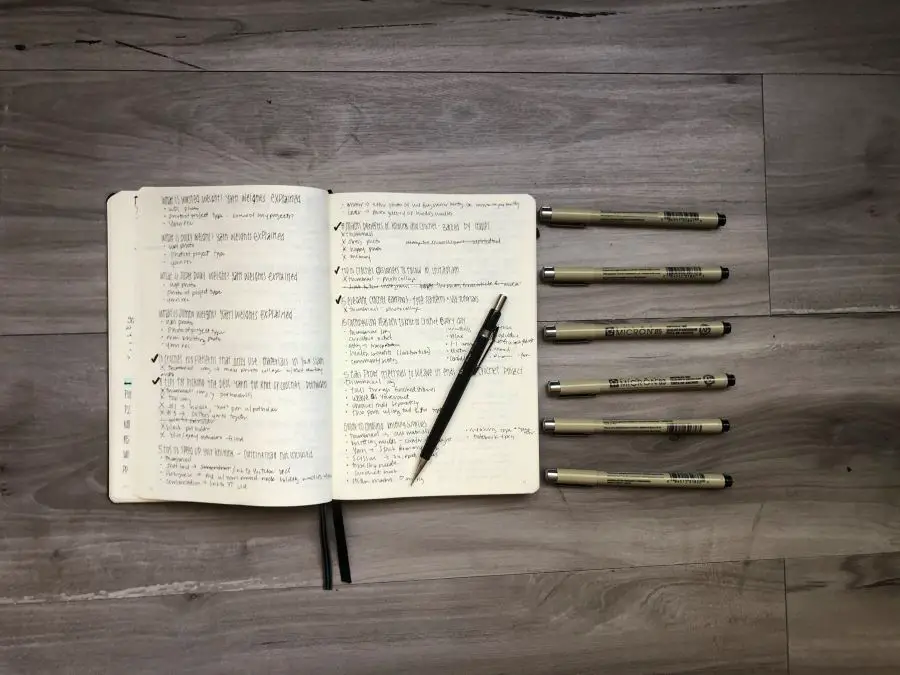
A blank notebook and a good pen or pencil is one of the best tools to keep with your project supplies. I personally like the notebooks without lines, but any notebook you have lying around or even copy paper will be fine. The notebook and pen will be for taking notes about the pattern or to jot down ideas you might have for a project you want to make.
I use my notebook all the time. When there are a lot of rows and stitches to keep track of, I make tick marks for each one. Then, if I put the project away for a little bit, I can quickly count the number of completed rows I already have. I don’t have to keep the number stored in my head.
The notebook is also helpful for making pattern notes that you may need to reference later. And if you have an interest in designing your own patterns, you need a place to keep all your ideas. Use your creativity and use the notebook in a way that suits your needs.
Patterns
Now the fun part! Find a pattern or patterns that interest you. Look through books at the public library for ideas, pick up a book at your local craft store, browse through Pinterest for free patterns, or purchase patterns through ravelry.com or Etsy. The key is to find something that you will be proud of when you are done.
Recommended Products
I really hope this has helped you determine the exact supplies you need to start your very own crochet projects. If you are interested in more of the products I recommend, please go to my “Recommended Products” page to learn more.
Happy crocheting!
